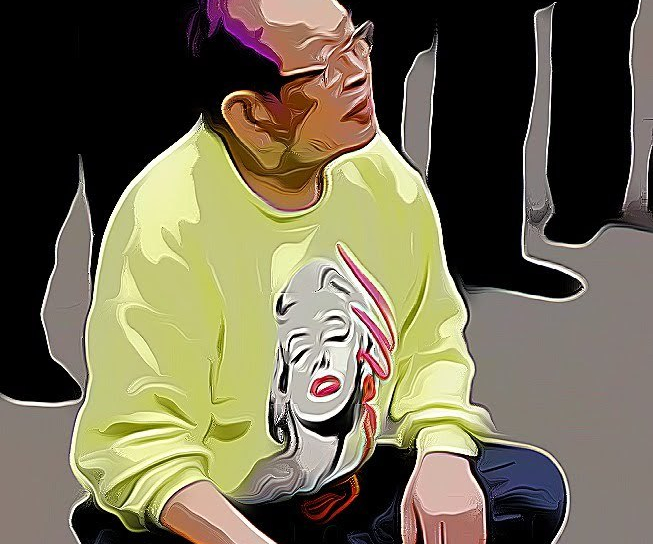
I recently covered the concept of “Mochikaeru” after a class by Nagato Sensei. (1)
But Mochikaeru has another meaning which is close to juggling. (2)
When you “transfer something from one hand to the other,” you are juggling. What is interesting is that it is not valid only in the physical world. You can also juggle with ideas and concepts. In fact, Kyojutsu is the art of juggling between truth and falsehood. Remember the difference between Kyojitsu and Kyojutsu. Kyojutsu is a technique using Kyojitsu techniques, i.e., using deception. (3) (4)
Sensei’s Budō is only about manipulating the space to deceive the attacker. I want to add that I see the Mutō Dori of 2019 as pure Kyojutsu. Sensei’s Budō keeps juggling with Uke’s perceptions and change his perception of reality. We offer Uke a “fake reality” to make him fall into the Kūkan. (5) You have to juggle between his reality and yours. To reach the “juggler state,” you have to train using Kyojitsu Konkō and mix up reality. (6) You have to force your reality into Uke’s appreciation of the situation. Some practitioners will develop the ability after many years. Some never reach this level. They will remain on the ground and never take off.
When I’m training at the Bujinkan Honbu, I often see two main types of students. The “Waza collectors” that have no Kankaku. And “Kankaku exclusives” with no knowledge of the Waza. Try not to belong to one of these two groups. Stay in the middle as if on a path with Waza on your left, and Kankaku on your right. The Monk Shinran and the Jōdo Shinshū speak about the Niga Byakudō, the “white path between two rivers.” (7)
In Nature, many caterpillars never get to become beautiful butterflies. It reminds me of one of my favorite book called “Illusions” by Richard Bach. Richard Bach is a famous American writer who wrote. He wrote, “What the caterpillar calls the end of the world the master calls a butterfly. (8) (9)
Unfortunately, you cannot learn this “Kyojutsu / Mutō Dori” in a book. It has to go through a long process, and it is hard work. This is precisely why our Bujinkan system is an art and not a sport. A Japanese expression for that, it is: “虚実皮膜, Kyojitsu Himaku.” “The difference between truth and fiction in Art is very subtle; Art abides in a realm that is neither truth nor fiction.” (10)
Sensei often says that “anyone can replicate a Waza, but that his Art is difficult.” Let me take an example here. If you copy a painting by some famous painter, your copy will never “taste” the same as the original. Beyond technique, something extra exists, this is Kankaku, feeling. Only an artist can include that into his work. Sensei is a great artist, and an artist is not a regular person. He is someone who sees the world with a different set of senses. An artist always starts as an apprentice of the form and the technique. It is only when he can exceed his knowledge that he turns into an artist. The goal of Hatsumi Sensei is to turn us into artists to develop our vision of Budō. In the past, Sven, Peter, Pedro, and I had a similar understanding of the Bujinkan. Today, our perception of Taijutsu is different. Each time we meet is an excellent opportunity to learn from one another. Our unity is the glue of our differences.
If you want to move from the apprentice level to the artist level, you have to train with your heart and your spirit. This is why the Bujinkan arts are a “Kokoro no Budō” as stated by the late Takamatsu Sensei.
So study and learn the Mutō Dori based on Kyojitsu to get to your next level and turn yourself into an artist. This is a tough path, and many get lost. Deception and manipulation are applied to the opponent, not to you! Kyojutsu is only a technique to win over adversity, it is not an end in itself.
Use the tools of Gomakasu (11), but be a Komakasu, a barbarian artist to trust. (12)
1 持ち帰る, Mochikaeru: to bring back; to carry home; to take out (e.g., food) / See one of my May posts written in Japan.
2 持ち替える, Mochikaeru: to change the way one holds something; to transfer something from one hand to the other
3 虚実, Kyojitsu: truth or falsehood
4 虚術, Kyojutsu: the technique of deception
5 空間, Kūkan: space; room; airspace; Space
6 虚実混交, Kyojitsu Konkō: a mishmash of truth and untruth; a mixture of fiction and fact
7 About Shinran: https://en.wikipedia.org/wiki/Shinran.
About the Niga Byakudō, read https://nembutsu.info/blacker.htm. This is a long text, go straight to the end, you will find it in the 4th paragraph before the end
8 In “Illusions, the adventures of a reluctant Messiah, book by Richard Bach. https://www.amazon.com/Illusions-Adventures-Reluctant-Richard-Bach/dp/0440204887
9 Listen to the audiobook https://www.youtube.com/watch?v=WX8vp_nW0OU
10 虚実皮膜, Kyojitsu Himaku” means that “the difference between truth and fiction in Art is very subtle. So, Art abides in a realm that is neither truth nor fiction.”
11 誤魔化す, Gomakasu: to deceive; to falsify; to misrepresent; to cheat; to swindle; to tamper; to juggle; to manipulate
12 胡任す Ko Makasu: a barbarian to entrust
